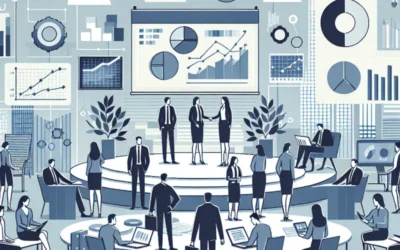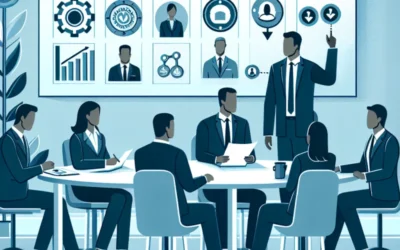Team M&A Firm
Transaction Experience is paramount to getting all you deserve in a deal
Contact Us

Michael Gravel
Michael is the founder and managing partner of iMerge Advisors and brings nearly 30 years of senior-level executive operations, fundraising, private equity, venture capital, M&A, and investment banking experience within the technology sector. also Team M&A Firm Prior to the founding of iMerge, Michael spent ten years in senior executive positions for financial software technology firms such as Bankers Systems (Acquired by Wolters Kluwer) Sungard International, PCi Corporation (Acquired by Wolters Kluwer), Logica (Acquired by CGI). In addition, as an executive with these companies, he managed and integrated several acquisitions.
At iMerge, Michael’s extensive experience and exceptional skill set have made him an invaluable asset. Over the past 25 years, he has successfully executed more than 125 transactions in the small to mid-size software and technology sector, totaling over $1 billion in value. Michael’s expertise, combined with his dedication to his clients, has cemented his position as a trusted advisor in the industry.
Beyond his professional life, Michael is actively engaged in several charitable organizations, demonstrating his commitment to making a positive impact on society. Notably, he is involved in the Big Brother/Big Sister program, where he has touched the lives of countless individuals. His efforts have been recognized by the organization, which awarded him their highest honor, Big Brother of the Year. Through his work at iMerge and his community involvement, Michael continues to demonstrate his passion for helping others and contributing to a better world.
Michael holds a BA in Psychology and Finance from the University of Massachusetts, Amherst.

Todd Lorbach
At iMerge Advisors, Todd Lorbach serves as a managing director, bringing with him a wealth of transaction expertise gained from his 25 years of experience in software, private equity, negotiation, and international strategies. Before joining iMerge, Todd spent eight years as the senior international sales and operations executive for Datastream Systems, an EAM software firm. In this role, he established offices in London, Sydney, and Monterrey, and formed strategic partnerships with 18 international distributors.
Todd’s global experience also includes living in London, Rotterdam, Munich, and Singapore for five years as Datastream acquired four international competitors and an Australian distributor using funds from an initial public offering (Nasdaq: DSTM; acquired by Infor) and a secondary offering.
His accomplishments extend to providing funding for seven start-up ventures and advising an investment fund from concept creation through the acquisition of five entities. Todd has also executed 18 sell-side transactions for a Morgan Stanley portfolio. At iMerge, Todd has successfully completed dozens more transactions. In addition to these achievements, he funded a research organization that developed award-winning wellness programs for underprivileged seniors.
Todd holds a BA in Finance & Accounting from Clemson University, showcasing his strong foundation in the financial sector. With his extensive experience and dedication to making a positive impact, Todd is a valuable member of the iMerge Advisors team.
Contact Us
M&A Advisory services
Professionalism & Integrity
Professionalism and integrity are simple baselines that are expected by clients throughout the mergers & acquisitions industry. We aim to vastly exceed those expectations.
Our m&a advisory services are based solely on what is best for you as our client and not what would benefit the firm’s bottom line.
In addition, we understand our client’s personal objectives and needs while guiding them through this intensive and sometimes emotional process.
Dealmaker Insights
How can we design compensation and benefits packages that are competitive and attract top talent?
Summary of:
How SaaS CEOs Can Design Compensation and Benefits Packages That Attract and Retain Top Talent
In today’s hyper-competitive SaaS landscape, talent is your most defensible moat. As Jason Lemkin, founder of SaaStr, puts it: “The best SaaS companies are talent machines first, product companies second.” But attracting and retaining that talent—especially in a market where top engineers, product managers, and GTM leaders are fielding multiple offers—requires more than just a competitive salary.
Designing compensation and benefits packages that resonate with high-performers is both an art and a science. It demands a nuanced understanding of market benchmarks, behavioral economics, and long-term value creation. Drawing on research from elite MBA programs, insights from SaaS leaders, and data from firms like McKinsey and SaaS Capital, this article outlines a strategic framework for SaaS CEOs to build compensation systems that drive performance, loyalty, and enterprise value.
1. Anchor Compensation to Value Creation, Not Just Market Rates
According to Wharton’s Human Capital Management program, compensation should be viewed as a strategic investment, not a cost center. For SaaS companies, this means aligning pay with metrics that matter—like ARR growth, net revenue retention (NRR), and customer lifetime value (CLTV).
- Equity as a Strategic Lever: Equity remains a powerful tool, especially for early- to mid-stage SaaS firms. But it must be structured thoughtfully. Use time-based and performance-based vesting to align incentives with long-term outcomes. For example, tie vesting to hitting $10M ARR or achieving a Rule of 40 score above 50.
- Variable Pay Tied to KPIs: For GTM roles, link bonuses to metrics like LTV:CAC ratio, sales cycle length, and expansion revenue. For product and engineering, consider innovation KPIs such as feature adoption rates or NPS improvements, as explored in this guide to innovation KPIs.
McKinsey’s 2023 report on tech talent retention found that companies with performance-linked compensation saw 25% lower attrition among top quartile performers.
2. Benchmark Against SaaS-Specific Compensation Data
Generic salary surveys won’t cut it. SaaS roles—especially in product, engineering, and customer success—have unique market dynamics. Use SaaS-specific data sources like:
- SaaS Capital’s Annual Compensation Survey – Offers benchmarks by ARR size, geography, and role.
- OpenComp and Carta – Provide real-time equity and salary data for venture-backed SaaS firms.
- Radford and Option Impact – Used by many VC-backed companies to calibrate offers.
For example, a VP of Engineering at a $20M ARR SaaS company in San Francisco may command $250K base, 20% bonus, and 1.5% equity. But in Austin, the same role might be 15% lower in cash comp but with a higher equity upside.
3. Design Benefits That Reflect the Needs of Modern Tech Talent
Benefits are no longer just “nice to have”—they’re a key differentiator. Stanford’s Center for Work, Technology, and Organization emphasizes that benefits must address both functional and emotional needs.
Core Benefits to Include:
- Remote-first flexibility with stipends for home office setup and co-working spaces.
- Equity education programs to help employees understand the value of their options or RSUs.
- Wellness stipends and mental health support—especially critical in high-growth, high-burnout environments.
- Parental leave parity across genders, which is increasingly a signal of inclusive culture.
Companies like Notion and GitLab have built reputations for their people-first cultures by offering benefits that go beyond the transactional—like sabbaticals, learning budgets, and asynchronous work policies.
4. Use Compensation as a Retention and Exit Strategy Tool
Compensation design also plays a critical role in M&A outcomes. As explored in Exit Business Planning Strategy, acquirers often scrutinize retention risk and team stability during due diligence. A well-structured compensation plan can increase your valuation multiple by reducing perceived risk.
- Retention Bonuses: For key employees, consider stay bonuses that trigger post-acquisition milestones (e.g., 12-month tenure post-close).
- Cliff Vesting Adjustments: If you’re preparing for a sale, review equity cliffs and acceleration clauses. As noted in Completing Due Diligence Before the LOI, these terms can impact deal structure and earn-out negotiations.
Advisors like iMerge often help SaaS founders restructure comp plans pre-sale to ensure alignment with buyer expectations and reduce post-close churn.
5. Build a Compensation Philosophy That Scales
As your company grows from $5M to $50M ARR, your compensation strategy must evolve. Harvard Business School’s case studies on SaaS scaling emphasize the importance of codifying a compensation philosophy early—one that balances internal equity, external competitiveness, and financial sustainability.
Key Elements of a Scalable Compensation Philosophy:
- Pay bands by level and function to ensure consistency and fairness.
- Clear promotion criteria tied to measurable outcomes and competencies.
- Annual comp reviews that incorporate market data, performance, and inflation adjustments.
Transparency is key. Companies like Buffer and GitLab have gone as far as publishing their compensation formulas publicly, which has helped them attract mission-aligned talent and reduce negotiation friction.
6. Incentivize Innovation and Cross-Functional Impact
Top SaaS talent isn’t just looking for a paycheck—they want to make an impact. Stanford’s research on innovation incentives suggests that compensation tied to cross-functional outcomes (e.g., product-led growth, customer success collaboration) can drive better business results.
- Innovation Bonuses: Reward teams for launching features that hit adoption or revenue targets.
- Shared OKRs: Align product, marketing, and sales teams with shared bonus pools tied to NRR or upsell metrics.
This approach not only boosts performance but also strengthens culture—an intangible asset that buyers value highly in SaaS M&A, as discussed in What Are the Key Financial Metrics Buyers Look For in a Software Company?
Conclusion: Compensation as a Strategic Growth Lever
In the SaaS world, your people are your product. Designing compensation and benefits packages that attract, motivate, and retain top talent isn’t just an HR function—it’s a strategic imperative that directly impacts your valuation, growth trajectory, and exit potential.
By anchoring pay to value creation, benchmarking against SaaS-specific data, offering modern benefits, and aligning incentives with long-term outcomes, CEOs can build a talent engine that scales with the business.
Scaling fast or planning an exit? iMerge’s SaaS expertise can guide your next move—reach out today.
What are the most effective methods for onboarding and integrating new employees into our company culture?
Summary of:
What Are the Most Effective Methods for Onboarding and Integrating New Employees into Our Company Culture?
In a SaaS business, where innovation cycles are fast and talent is a key differentiator, onboarding isn’t just an HR function—it’s a strategic lever. According to a Harvard Business Review study, companies with structured onboarding processes improve new hire retention by 82% and productivity by over 70%. For SaaS CEOs, especially those eyeing growth, M&A, or exit opportunities, this isn’t just about culture—it’s about valuation, scalability, and risk mitigation.
So, how do you onboard and integrate new employees in a way that aligns with your company’s culture, accelerates time-to-productivity, and supports long-term engagement?
1. Start Before Day One: Preboarding as a Strategic Touchpoint
Elite MBA programs like Wharton and Stanford emphasize the importance of “preboarding”—the period between offer acceptance and the first day—as a critical window to shape expectations and reduce early attrition. In SaaS, where top talent often juggles multiple offers, this phase can make or break your employer brand.
- Send a welcome kit with company swag, a personalized note from the CEO, and a roadmap of their first 90 days.
- Grant early access to internal tools like Slack or Notion (in read-only mode) to help them absorb your tone, rituals, and values.
- Assign a culture buddy—not just a manager—to answer informal questions and share unwritten rules.
These small touches reduce anxiety and signal that your company values intentionality—an important cultural cue in high-performance SaaS environments.
2. Design a 30-60-90 Day Plan Anchored in Culture and KPIs
According to Stanford’s Organizational Behavior curriculum, effective onboarding balances cultural immersion with performance clarity. For SaaS companies, this means aligning onboarding with key business metrics like ARR growth, churn reduction, or product velocity.
Here’s a sample 30-60-90 framework:
- Days 1–30: Focus on cultural immersion—company history, values, customer personas, and product demos. Include shadowing sessions with cross-functional teams.
- Days 31–60: Begin light execution—small projects tied to real KPIs (e.g., improving a support workflow or analyzing churn data).
- Days 61–90: Own a deliverable that contributes to a team OKR. This reinforces accountability and builds confidence.
Use tools like Lattice or 15Five to track progress and gather feedback. This structure not only accelerates productivity but also signals that your culture values outcomes, not just effort.
3. Codify and Communicate Your Culture—Don’t Assume It’s Obvious
In SaaS, culture is often described as “what happens when no one is looking.” But for new hires, ambiguity can be paralyzing. As David Skok notes in his SaaS scaling frameworks, clarity is a growth multiplier.
Codify your culture in a living document—what Wharton calls a “Culture Deck.” Include:
- Core values in action: Not just “customer obsession,” but how that shows up in product decisions or support SLAs.
- Decision-making norms: Do you favor speed over consensus? Data over instinct?
- Communication styles: Async-first? Radical candor? Weekly all-hands?
Make this deck part of onboarding, and revisit it quarterly. As explored in What Company Values Should We Define and Promote to Build a Strong and Positive Culture, defining and reinforcing values is essential to long-term alignment and retention.
4. Leverage Technology to Scale Culture Without Diluting It
As your SaaS company grows—organically or through acquisition—scaling culture becomes exponentially harder. Tools like Donut (for virtual coffee chats), Culture Amp (for engagement surveys), and Loom (for async onboarding videos) help reinforce culture at scale.
For example, a mid-sized SaaS firm with $15M ARR used Donut to pair new hires with peers across departments, increasing cross-functional collaboration and reducing siloed thinking—an issue that often surfaces during M&A due diligence.
5. Integrate Culture into Performance and Feedback Loops
According to McKinsey’s 2023 report on talent in tech, companies that embed cultural values into performance reviews see 30% higher employee engagement. This is especially critical in SaaS, where high churn (both customer and employee) can erode enterprise value.
Here’s how to do it:
- Include cultural behaviors in 360 reviews—e.g., “How well does this person embody our value of ‘default to transparency’?”
- Reward culture carriers in public forums like all-hands or Slack shoutouts.
- Use engagement surveys to track cultural alignment and flag early signs of misfit.
These practices not only reinforce desired behaviors but also create a feedback-rich environment—key to innovation and retention.
6. Post-Acquisition? Double Down on Cultural Integration
If your company is acquiring or being acquired, onboarding becomes even more critical. As covered in Exit Business Planning Strategy, cultural misalignment is a top reason deals underperform post-close.
In these cases, consider:
- Joint onboarding sessions for legacy and acquired teams to build shared context.
- Culture mapping workshops to identify overlaps and gaps in values, rituals, and decision-making styles.
- Retention risk assessments to identify key talent who may feel culturally alienated.
Advisors like iMerge often guide SaaS firms through these transitions, using proprietary frameworks to assess cultural fit and integration risk during due diligence.
7. Measure What Matters: Culture KPIs for SaaS Leaders
To ensure your onboarding strategy is working, track metrics that tie directly to business outcomes. Drawing from Stanford’s innovation KPIs and SaaS Capital’s 2023 benchmarks, consider:
- Time to productivity: How long until a new hire contributes to a team OKR?
- Early attrition rate: % of new hires who leave within 6 months.
- Cultural alignment score: From pulse surveys or manager assessments.
- Internal NPS: Would new hires recommend your company to a peer?
These KPIs not only inform HR strategy but also impact valuation. As noted in Valuation Multiples for SaaS Companies, acquirers increasingly scrutinize team cohesion and cultural health as part of their risk assessment.
Conclusion: Culture Is a Growth Lever—Treat It Like One
In SaaS, where your people build your product, support your customers, and drive your ARR, culture isn’t soft—it’s strategic. Effective onboarding is your first and best chance to align new hires with your mission, values, and velocity.
Whether you’re scaling toward a Series C, preparing for an exit, or integrating an acquisition, the methods outlined here—from preboarding to culture KPIs—can help you build a resilient, high-performing team.
Scaling fast or planning an exit? iMerge’s SaaS expertise can guide your next move—reach out today.
How can we identify and develop internal talent pipelines to fill future leadership positions?
Summary of:
How SaaS CEOs Can Build Internal Talent Pipelines for Future Leadership
In a 2023 McKinsey survey, 86% of tech executives said leadership development is a top-three priority—yet only 13% felt confident in their internal pipeline. For SaaS CEOs navigating rapid growth, evolving technologies, and potential exits, this gap isn’t just a talent issue—it’s a strategic risk.
Whether you’re scaling toward a $50M ARR milestone or preparing for a liquidity event, the ability to identify and develop future leaders internally can directly impact valuation, continuity, and culture. Drawing on research from elite MBA programs, insights from SaaS founders, and frameworks used by M&A advisors like iMerge, this article outlines how to build a robust internal leadership pipeline—one that aligns with innovation, retention, and long-term enterprise value.
Why Internal Leadership Pipelines Matter in SaaS
Jason Lemkin, founder of SaaStr, often emphasizes that “great SaaS companies are built by great teams, not just great products.” In high-growth environments, external hires can’t always keep pace with the speed of change or the cultural nuance required to lead effectively. Internal talent, on the other hand, brings institutional knowledge, loyalty, and often, a lower ramp-up cost.
From an M&A perspective, buyers increasingly scrutinize leadership depth. As explored in Sell My Software Company: Everything You Need to Know, acquirers view succession planning as a key risk factor—especially in founder-led businesses. A strong internal bench can de-risk the deal and even improve valuation multiples.
1. Identify High-Potential Talent with Data-Driven Precision
Use Predictive Performance Metrics
Elite MBA programs like Wharton and Stanford teach that potential is not just past performance—it’s the ability to grow into future roles. Use a combination of leading indicators to spot high-potential (HiPo) employees:
- Learning agility: Track how quickly employees master new tools or adapt to role changes.
- Cross-functional impact: Use internal 360 reviews to assess influence beyond their immediate team.
- Innovation KPIs: As outlined in this guide on innovation KPIs, track contributions to new product features, process improvements, or customer success initiatives.
Leverage AI and People Analytics
Companies like Workday and Lattice offer AI-driven talent insights that can flag rising stars based on engagement, performance, and promotion readiness. According to a Harvard Business Review study, firms using predictive talent analytics saw 25% higher leadership retention over five years.
2. Build a Structured Leadership Development Framework
Adopt a Tiered Development Model
Stanford’s “Leadership Pipeline” model recommends segmenting development into three tiers:
- Emerging Leaders: Focus on foundational skills—communication, time management, and team collaboration.
- Mid-Level Managers: Train on cross-functional leadership, budgeting, and performance management.
- Executive Readiness: Offer exposure to board meetings, strategic planning, and investor relations.
Each tier should have clear criteria, mentorship assignments, and measurable outcomes. For example, a mid-level manager might be tasked with leading a cross-departmental initiative tied to ARR growth or churn reduction.
Incorporate Stretch Assignments
Per research from Wharton, rotational programs and stretch assignments are among the most effective tools for developing leadership capacity. Assign HiPo employees to lead pilot projects in areas like AI integration, customer success optimization, or M&A due diligence—areas that directly impact enterprise value.
3. Align Talent Development with Strategic Business Goals
Map Leadership Roles to Future Needs
Use your strategic roadmap to forecast the leadership roles you’ll need in 12–36 months. For example, if you’re expanding into EMEA, you may need a regional GM with regulatory and localization expertise. If you’re preparing for an exit, you’ll need a CFO fluent in SaaS metrics and M&A structuring.
As discussed in Exit Business Planning Strategy, aligning talent development with exit planning ensures continuity and reduces key-person risk—two factors that can materially affect deal terms.
Tie Development to Financial KPIs
Track how leadership development impacts core SaaS metrics:
- Customer Retention: Are leaders improving NRR through better onboarding or support?
- Employee Engagement: Use eNPS and turnover rates to measure cultural health.
- Innovation Velocity: Are new leaders accelerating time-to-market for features?
These metrics not only validate your pipeline strategy but also serve as proof points during investor or acquirer due diligence.
4. Institutionalize Mentorship and Coaching
Formalize Internal Mentorship Programs
Pair emerging leaders with senior executives for quarterly coaching sessions. According to a 2022 SaaS Capital report, companies with formal mentorship programs saw 30% higher internal promotion rates and stronger retention among top performers.
Bring in External Executive Coaches
For executive-track talent, consider external coaching. Firms like BetterUp or Torch offer scalable coaching platforms tailored to SaaS leadership challenges—such as managing remote teams, scaling GTM functions, or preparing for board-level interactions.
5. Create a Culture That Supports Leadership Growth
Reward Leadership Behaviors, Not Just Outcomes
Incentivize behaviors like cross-functional collaboration, knowledge sharing, and mentoring. Use OKRs or bonus structures to reinforce these values. This approach aligns with the “culture of innovation” model taught at Harvard Business School, where leadership is seen as a multiplier of organizational capability.
Ensure Psychological Safety
Google’s Project Aristotle found that psychological safety is the #1 predictor of high-performing teams. Encourage open feedback, risk-taking, and learning from failure—especially in leadership development contexts.
6. Monitor, Measure, and Iterate
Use a Leadership Development Dashboard
Inspired by Stanford’s innovation KPI frameworks, build a dashboard that tracks:
- Promotion velocity (time to next role)
- Leadership bench strength by function
- Attrition rates among HiPo employees
- Impact of leadership on key business metrics (e.g., LTV:CAC, churn, NPS)
Conduct Annual Talent Reviews
Borrowing from GE’s “Session C” model, conduct annual reviews with your executive team to assess pipeline health, succession readiness, and development gaps. This ensures your talent strategy evolves with your business model and market conditions.
Conclusion: Leadership Pipelines as a Strategic Asset
In SaaS, where growth is exponential and exits are often sudden, internal leadership pipelines are more than an HR initiative—they’re a strategic asset. They reduce risk, increase valuation, and ensure continuity through scale, acquisition, or IPO.
Advisors like iMerge often work with SaaS founders to assess leadership depth as part of pre-exit planning. Whether you’re preparing for a sale or simply future-proofing your org chart, investing in internal talent is one of the highest ROI moves you can make.
Scaling fast or planning an exit? iMerge’s SaaS expertise can guide your next move—reach out today.






